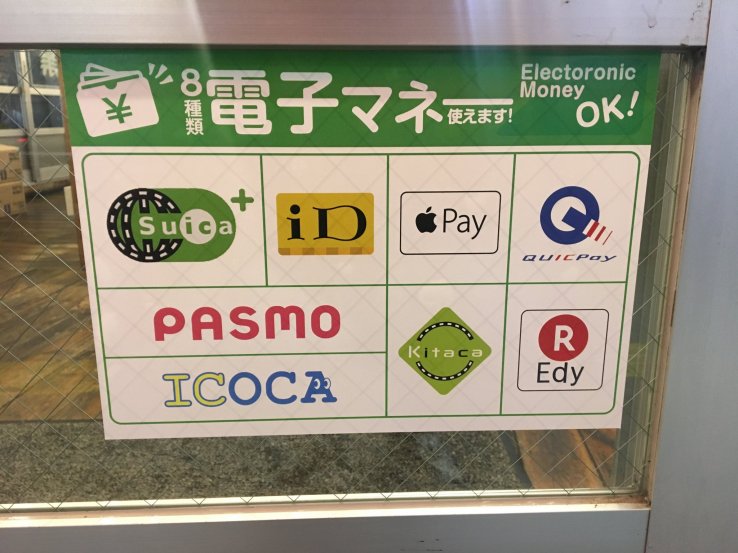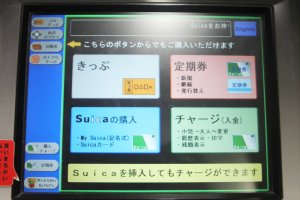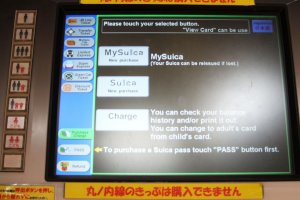For a convenient and stress-free travel experience, both around Tokyo and in regions beyond, it’s worth investing in a Suica card. This debit-style transportation card is popular with both residents of Japan and visitors alike. Take the hassle out of trying to figure out metro routes and ticket costs by purchasing a rechargeable Suica card.
What is a Suica card?
Suica is a debit-style transportation card sold by the JR Rail Company in its Tokyo train station hubs, as well as in locations such as Haneda and Narita Airports. This distinctive bright green card with its penguin logo can be used almost indefinitely – it doesn’t expire unless a period of ten years has passed between uses, and any monetary balance remains unaffected in that time.
What are the benefits of having a Suica card?
Above all – convenience. With Japan still often considered a cash-based society, it pays to have a multi-purpose card that can take care of most of your travel needs, but the Suica IC card can achieve a lot more:
- Tap-and-go access to trains, buses and trams around Japan. More >
- Pay at vending machines, shops and restaurants. More >
- Access to luggage storage lockers at stations. More >
How are Suica and PASMO different?
Many first-time visitors to Japan may often wonder what are the differences between Suica and PASMO – another IC travel card often mentioned.
PASMO cards are transportation cards that are designed and sold by Tokyo Metro. Suica cards are designed and sold by Japan Rail (JR).
Aside from their outward appearance, there is virtually no difference in usage between the Suica and PASMO cards. For travelers or visitors staying near the center of Tokyo, which has an abundance of Tokyo metro stations, it may simply be easier to purchase a PASMO card from the nearest station instead of making the trek to a more outlying JR rail station.
How can I purchase a Suica?
Suica cards can be purchased from ticket machines in most of Tokyo’s main JR rail stations (ie Tokyo, Hamamatsucho, Shimbashi, Shinjuku, Shibuya, etc). English instructions walk buyers through the steps needed to obtain a card. Cards can be personalized or left blank – if personalized, a card that is lost can later be identified and reclaimed with proof of identification. You can also purchase via Klook to get a mobile voucher to exchange.
Cards require an initial ¥500 deposit, though this can be reclaimed when returning the card (inside the station) at the end of your holiday.
For a more convenient option, Suica can be added to your smartphone via Apple Wallet (for iPhone users) or the Suica app on Android (for devices that support mobile payments). This allows for easy top-ups, no need for a physical card, and the ability to use your phone for tap payments on trains, buses, and even in stores.
For iPhone Users (Apple Wallet)
- Open the Wallet app on your iPhone.
- Tap the "+" button in the top right corner to add a card.
- Select "Transit Card" and choose Suica from the list.
- Follow the setup instructions:
- You can create a new Suica card and add funds.
- If you have a physical Suica card, you can transfer it by placing it on the back of your iPhone (iPhone 8 or later).
- Once added, you can use Apple Pay to recharge your Suica and tap your phone to use it for transportation and purchases.
iPhones must support Apple Pay (iPhone 8 or later). Suica can also be used on Apple Watch (Series 3 or later).
For Android Users (Google Wallet or Suica App)
-
Check if your phone supports Osaifu-Keitai (おサイフケータイ) or Google Wallet with NFC.
-
Download the Suica app from the Google Play Store.
-
Open the app and follow the prompts to create a new Suica card.
-
Recharge using a registered credit/debit card or at convenience stores.
-
Use tap-to-pay by holding your phone near the ticket gates or payment terminals.
Google Wallet now allows direct Suica integration in Japan for compatible Android devices.
How to top up a Suica
Cards can be topped up immediately, or at regular intervals as needed. When charging the card, cash can be added in increments of ¥1000. Suica cards can hold a balance of up to ¥20,000. Only yen cash can be used to add money to a Suica card. Credit cards are not accepted.
You can also top up a Suica at most ticket machines, even at non-JR stations, such as Tokyo Metro, as well as buses that accept Suica/PASMO.
Did you know? If you are caught out and run out of charge on the card when arriving at a station, you can even top-up at special kiosks inside the gates before you exit. It reduces the need to worry about trying to calculate the exact fare between stations.
For children aged 6-11, a special youth Suica card can be obtained. Marked with the kanji for small (小), this card entitles younger users to a discount of 50% on the regular train fare. Youth Suica cannot be purchased at the self-service kiosks and must be bought in person from a JR staff member in one of the JR train offices. Presentation of identification or of the minor him or herself may be required.
Step-by-step guide to buying the Suica

- Find the nearest ticket vending machine.
- Touch the 'English' button on the right corner of the monitor to switch languages for easier use.
- Select 'Purchase New Suica' on the lower left panel.
- You'll have 3 options: MySuica (for personalization - useful if needing to reclaim a lost card), Suica and Charge.
- There are several options you can choose, from ¥1000 to ¥10,000 (including the deposit cost of ¥500).
- Insert cash.
- And finally, take your Suica card, change, and receipt.
How to check your Suica card balance
If you have a physical Suica card that is not linked to your phone, you can see your remaining balance when you pass through ticket gates and at ticket vending or charging machines when you insert your card. You can also use the “Japan train card balance check” app to see your balance (Apple / Android). If your card is digital or linked to your phone, you can check your balance through the Suica App (Apple / Android).
Returning your Suica when leaving Japan
A Suica card will become invalid if it is not used for 10 years. So, if you plan on returning to Japan within 10 years, you can keep your Suica and use it again upon your return. However, if you decide not to keep your Suica, you may return it to any JR rail office.
If any amount of money over ¥220 is left on the card, the JR company will charge a fee of ¥220 to process a refund and return the remaining amount to you. If the balance is under ¥220, no refund is issued and the balance is zeroed out.
(This includes balances such as ¥80, that would end up in negative numbers upon subtraction of the refund fee. The balance is simply zeroed out with no penalty to the card holder.)
However, all customers will receive the initial ¥500 deposit back upon turning in the card.
Where can I use my Suica card?

Travel with Suica
Suica cards are most commonly used as transportation passes, which users simply tap over the ticket gate to gain entry to the train tracks and tap again to exit a station, where the fare for the journey is automatically calculated and debited. There is a small discount on single journeys for those that use a Suica pass compared to those that rely strictly on paper tickets.
While cards emblazoned with Suica are sold in Tokyo, these JR-sponsored passes are also usable on regional forms of transportation.
Since 2013, Suica can be used interchangeably with the regional IC cards, like Kansai's ICOCA and PiTaPa, Nagoya's TOICA and Manaca, Sapporo's Kitaca, Fukuoka's SUGOCA and Hayakaken and Kyushu's nimoca. Hiroshima's street car/trams also support Suica, as well as several other regional transport systems.
Note that continuous travel between different regions of Japan is not possible just on a Suica alone.
Did you know?
Tokyo Metro and other transport operators are gradually rolling out support for contactless payment at ticket gates across their networks. This means having a card that supports contactless, like the Wise card gives you extra convenience and peace of mind when travelling.
Together with the app, a Wise card can help give you more spending flexibility in Japan while always knowing you'll get competitive exchange rates and the ability to set currency alerts or auto-convert currency.
Shop with Suica
Suica can also be used to make purchases at vending machines marked with the card’s logo. Simply tap the card against the machine’s card reader, select the product of your choice, and tap your card a second time to complete the purchase.
Many convenience stores also now provide an option for Suica holders to use their card to pay for purchases. Look for the card reader at the cash register and follow the clerk’s instructions or the instructions on the screen.
Many restaurant chains also support payments by Suica – just look for the familiar green logo near the payment terminal.

Luggage Storage
A number of lockers in Japan have begun switching to a cashless system, where users access their bags with a Suica or other debit-style transportation card.
Often found in train stations, these lockers don’t require a key for entry, and instead provide an entry code to be used in conjunction with the Suica card when reclaiming any baggage.
How to know if supported

If in doubt, you'll always be able to use an IC card like Suica where the logo mark is shown. Near transportation hubs, you'll typically find this represented by a grid of similarly accepted IC card brands, otherwise you may just see the official IC logo mark in its place.




























